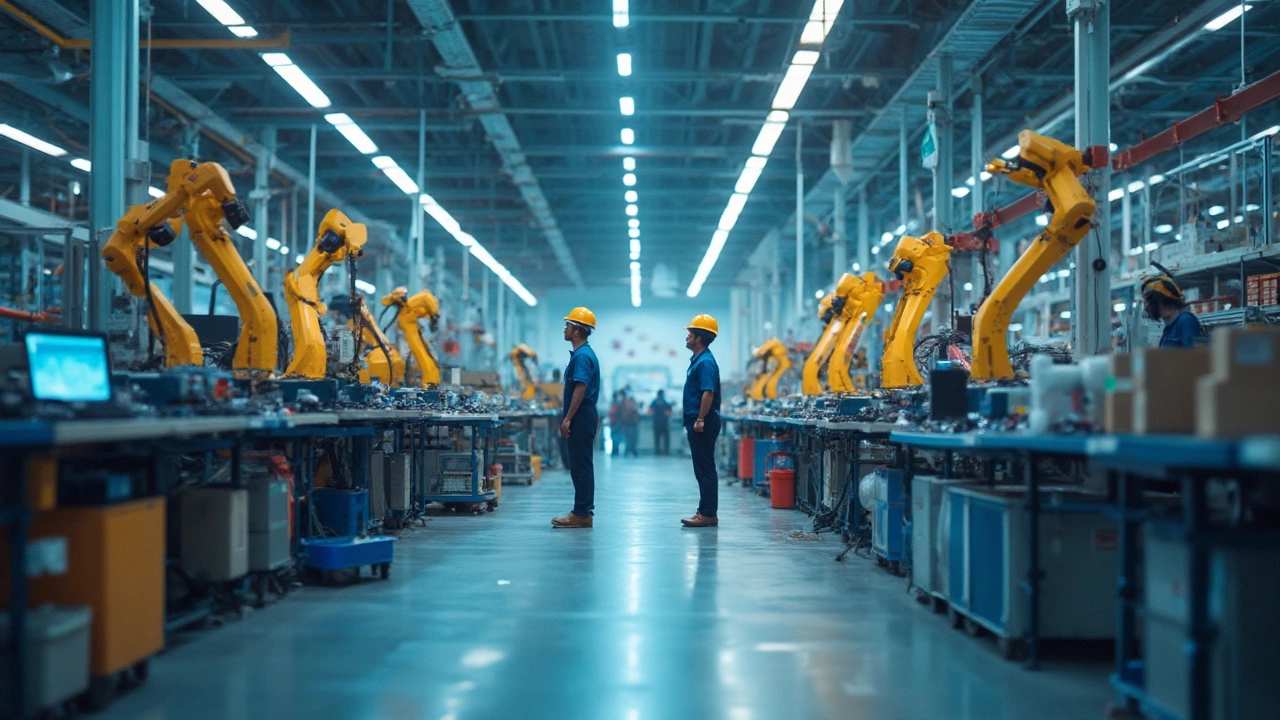Indian Tech Growth: What’s Driving the Manufacturing Boom?
India’s tech scene is buzzing, and it’s not just about apps or start‑ups. The real action is happening on the factory floor, where new tools and smart systems are changing how things are built. If you’ve ever wondered why India is becoming a hub for advanced manufacturing, this guide breaks it down in plain language.
First off, cost matters. Labor is still affordable compared to many Western countries, but Indian firms are no longer relying on cheap hands alone. Automation, robotics, and AI are stepping in to lift productivity without a massive price tag. Companies like Blue D Air Control are using precision air‑control systems that can adjust airflow in real time, cutting waste and energy bills.
Key Technologies Powering the Shift
Three tech trends dominate the conversation:
1. Internet of Things (IoT) – Sensors on machines send performance data to a central dashboard. Plant managers can spot a slowdown before it becomes a costly breakdown.
2. Additive Manufacturing (3D printing) – Small batches of custom parts are produced on‑demand, reducing inventory costs and speeding up product launches.
3. Advanced Control Systems – Think of the air‑control solutions that keep clean rooms at the right pressure, or energy‑optimizing software that tweaks motor speeds for maximum efficiency.
These tools are not just for big players. Even medium‑size factories in Gujarat and Tamil Nadu are adopting them, thanks to government incentives and a growing pool of skilled engineers.
Challenges You Can’t Ignore
Growth isn’t without hiccups. The biggest roadblocks are skilled labor gaps and uneven digital infrastructure. While cities like Bangalore have fast internet, remote manufacturing hubs sometimes still wrestle with spotty connectivity. Bridging this gap means investing in training programs and upgrading broadband networks.
Another concern is regulation. New emission standards, such as the shift from BS4 to BS6 engines, push manufacturers to upgrade equipment faster than they might like. Yet, these rules also spark innovation – companies are racing to develop cleaner, more efficient processes.
Finally, supply chain reliability matters. The pandemic taught us that dependence on a single source can stall production. Indian firms are now diversifying suppliers, especially for critical components like electronic modules and specialized alloys.
Despite these challenges, the outlook stays bright. Export demand for Indian‑made electronics, automotive parts, and pharmaceutical equipment is rising, and tech‑enabled factories are ready to meet it. By 2025, experts predict that smart manufacturing will account for a sizable share of India’s industrial output.
So, whether you’re an investor, a supplier, or a tech enthusiast, keep an eye on these trends. The blend of affordable labor, cutting‑edge technology, and supportive policies is turning India into a manufacturing powerhouse. Stay tuned, because the next big breakthrough could be just around the corner.

Electronic Industry in India: What’s Next for Manufacturing?
India’s electronics industry is on a serious roll, moving beyond just assembling mobile phones to building an entire ecosystem from scratch. With government support and smart supply chains, it’s pulling in global investments and homegrown talent. But the industry still faces speed bumps like tech gaps and skill shortages. Curious how India’s electronics sector can turn these challenges into real opportunities? Check out the facts, potential, and practical advice for the future right here.
